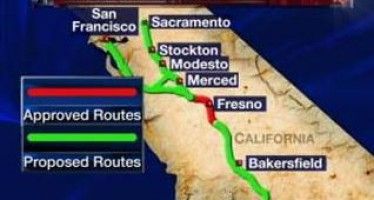Cap-and-trade could benefit new overseers
By Katy Grimes
The California Air Resources Board just named the American Carbon Registry and the Climate Action Reserve as California’s two new “carbon overseers” for the state’s cap-and-trade program. The “carbon overseers” phrase commonly is used for them at CARB hearings.
Being named as the “offset project registries” allows these groups to oversee and scrutinize projects aimed at cutting greenhouse gas emissions. They also could benefit financially because becoming a carbon overseer will allows them to expand their operation significantly.
The registries’ role is to vet the clean energy projects, CARB spokesman Dave Clegern said in a press release.
And if that is not daunting enough, CARB has also hired a team of 60 inspectors to oversee projects.
Climate Action Reserve is the largest offsets registry in North America, with nearly 500 offset projects in four U.S. states and Mexico, and has certified more than 24 million metric tons of greenhouse gas emission reductions. But according to an environmental consultant who asked to remain anonymous, Climate Action Reserve is an organization largely grown as a result of the passage and implementation of AB 32. Climate Action Reserve was steadily and quietly built up since 2006 to pounce on cap-and-trade implementation, according to the environmental consultant.
At a hearing in May about AB 32 implementation, Gary Gero of Climate Action Reserve called for even more radical caps and environmental policies including forest protocols, livestock protocols and ozone protocols. Gero said the group is looking to be “the largest liquid North American carbon market.”
It appears their wish is about to come true.
Adding to California’s regulatory burden
The cap-and-trade regulation includes an arbitrary but enforceable greenhouse gas emission “cap” on businesses, whose level will be dropped every year. CARB will distribute allowances, also known as carbon permits or carbon credits, equal to the emission allowed under the cap. Businesses are required to purchase these permits or credits in order to continue doing business in California.
But businesses which exceed this emission cap will end up paying hefty penalties to the state.
CARB describes cap-and-trade acts as an “economy-wide backstop,” built on the promise to work with other greenhouse gas emission markets and trade allowances. However, CARB sets all of the carbon allowances. It’s like being both the banker and real estate broker in the game of Monopoly.
Businesses in the state have tried to get CARB to explain how cap-and-trade will impact them as they suddenly are being forced to implement the new regulatory programs. But CARB merely plays down any impacts, and has insisted that the impacts will be minimal.
Whom will CA trade with?
California’s cap-and-trade program was supposed to be an integral part of a larger system called the Western Climate Initiative, made up of many states.
But last year, New Mexico, Arizona, Washington, Oregon, Montana and Utah all pulled out of the Western Climate Initiative, leaving only California and three Canadian provinces. Despite the U.S. exodus, California formally launched its own cap-and-trade system on Jan. 1, 2012, with a very ambitious target of carbon emissions reductions of 80 percent by 2050.
California’s only remaining official partner in the Western Climate Initiative is the Canadian province of Quebec. The province is working to launch its own scheme in 2013, and recently formally announced plans to link with California for carbon trading.
Serious flaws in trading
If California’s carbon trading partners offer more carbon allowances to their businesses and industries than California does, it will hurt our competitive advantage, just as higher in-state taxes already hurt California businesses competing against businesses in other states.
And it is very important to note that the California-Quebec relationship is not trading apples-to-apples. Quebec gets 97 percent of its energy from hydroelectric sources. Conversely, California is trying to reduce traditional electricity production, including hydroelectric power, and instead replace it with as much “renewable” energy as possible from wind and solar, algae and ethanol.
But the renewable energy sources are unreliable, and very expensive. Ironically, California will have to maintain a full backup system of coal-powered electricity because of the unreliable alternative energy.
Energy experts have been saying in recent months that California’s energy demand is too much for the alternative energy and lower usage standards.
Additionally, Quebec, population 8 million, has only 80 regulated industries under its cap-and-trade program; California, population 38 million, regulates more than 300 industries.
What is CARB selling?
Businesses, legislators and the public have repeatedly asked CARB several important questions:
* What are California’s businesses actually being asked to buy with the mandatory purchases of carbon credits?
* What about the economic consequences of forcing California businesses to buy nothing? And are these consequences intended or not?
* What does CARB really want? What are they trying to accomplish? If the goal really is to lower carbon emissions in California then clean hydroelectric power and natural gas will do it.
Members of the California Air Resources Board refuse to answer these questions, and instead continue stubbornly to push for cap-and-trade.
Related Articles
Bullet train: Denial is a river in Sacramento
The meeting Thursday of the board of the California High-Speed Rail Authority was a laugh riot, with authority officials dismissing
FPPC imposes regulation on political bloggers
The California Fair Political Practices Commission just ruled this week to require campaign committees to report to the State who they
New Warming Bill Would Hit CA Farmers
APRIL 5, 2011 By KATY GRIMES California farmers soon could face strict compliance with AB 32, the Global Warming Solutions






